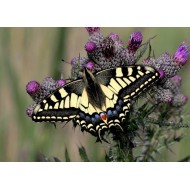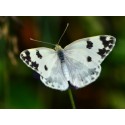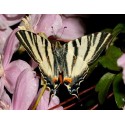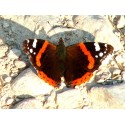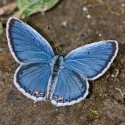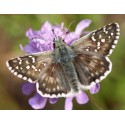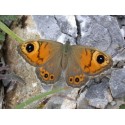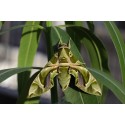LEPIDOPTERA ( Butterflies & Moths )
In this section you can find more than 500 different species of insects from Paleartic region for your collection or study.
Some species we have in stock are rare and discontinued but most of them are common beetles that we collect during our trips in Italy and Greece sold for a fair price and many others you find come from exchanges with other ...
In this section you can find more than 500 different species of insects from Paleartic region for your collection or study.
Some species we have in stock are rare and discontinued but most of them are common beetles that we collect during our trips in Italy and Greece sold for a fair price and many others you find come from exchanges with other collegues entomologists from all Europe.
All beetles are sold as A1 ( or A1- when specified ) with full collecting data, sold per single specimen, pairs or lots, they have been professionally collected, mostly hunted in fields or by light-trap, killed with the best methods to keep their legs very soft to be spread and mounted, then well preserved in sealed boxes with Camphor to prevent that pests can ruin them.
Some of these have been collected in tree-traps, pitfall-traps, dungs, these have already been accurately washed and rinsed, no hassles and no need to wash our specimens before you decide to prepare them.
All specimens are sealed in blisters ( cardboard , soft paper, cellophane on top and staples ) to protect them during shipping, some other soft bodied insects, are in tubes under preservant fluids.
Once you receive them , before you start mounting them, these specimens dry in blisters must be soften in humid box to get soft their appendix and legs.
BUTTERFLIES ARE SOLD FOLDED IN PAPILLOTES NOT SPREAD AS WELL
LEPIDOPTERA ( Butterflies & Moths ) There are no products in this category.
Subcategories
-
Pieridae
The Pieridae are a large family of butterflies with about 76 genera containing about 1,100 species, mostly from tropical Africa and tropical Asia with some varieties in the more northern regions of North America. Most pierid butterflies are white, yellow, or orange in coloration, often with black spots. The pigments that give the distinct coloring to these butterflies are derived from waste products in the body and are a characteristic of this family.
The name "butterfly" is believed to have originated from a member of this family, the brimstone,Gonepteryx rhamni, which was called the "butter-coloured fly" by early British naturalists.
The sexes usually differ, often in the pattern or number of the black markings.
The larvae (caterpillars) of a few of these species, such as Pieris brassicae and Pieris rapae, commonly seen in gardens, feed on brassicas, and are notorious agricultural pests.
BUTTERFLIES ARE SOLD FOLDED IN PAPILLOTES NOT SPREAD AS WELL
-
Papilionidae
Swallowtail butterflies are large, colorful butterflies in the family Papilionidae, and include over 550 species. Though the majority are tropical, members of the family inhabit every continent except Antarctica. The family includes the largest butterflies in the world, the birdwing butterflies of the genus Ornithoptera.
Swallowtails have a number of distinctive features; for example, the papilionid caterpillar bears a repugnatorial organ called the osmeterium on its prothorax. The osmeterium normally remains hidden, but when threatened, the larva turns it outward through a transverse dorsal groove by inflating it with fluid.
BUTTERFLIES ARE SOLD FOLDED IN PAPILLOTES NOT SPREAD AS WELL
-
Nymphalidae
The Nymphalidae are the largest family of butterflies with about 6,000 species distributed throughout most of the world. These are usually medium-sized to large butterflies. Most species have a reduced pair of forelegs and many hold their colourful wings flat when resting. They are also called brush-footed butterflies or four-footed butterflies, because they are known to stand on only four legs while the other two are curled up; in some species, these forelegs have a brush-like set of hairs which gives this family its other common name. Many species are brightly coloured and include popular species such as the emperors, monarch butterfly, admirals, tortoiseshells, and fritillaries. However, the under wings are, in contrast, often dull and in some species look remarkably like dead leaves, or are much paler, producing a cryptic effect that helps the butterflies blend into their surroundings.
ALL OUR BUTTERFLIES ARE SOLD FOLDED IN PAPILLOTES NOT SPREAD AS WELL
-
Lycaenidae
Lycaenidae is the second-largest family of butterflies (behind Nymphalidae, brush-footed butterflies), with over 5,000 species worldwide whose members are also called gossamer-winged butterflies. They constitute about 30% of the known butterfly species.
The family is traditionally divided into the subfamilies of the blues (Polyommatinae), the coppers (Lycaeninae), the hairstreaks (Theclinae) and the harvesters (Miletinae); others include the Lipteninae, Liphyrinae, Curetinae and Poritiinae, but some authorities also include the family Riodinidae within the Lycaenidae
Adults are small, under 5 cm usually, and brightly coloured, sometimes with a metallic gloss.
Larvae are often flattened rather than cylindrical, with glands that may produce secretions that attract and subdue ants. Their cuticles tend to be thickened. Some larvae are capable of producing vibrations and low sounds that are transmitted through the substrates they inhabit. They use these sounds to communicate with ants.
BUTTERFLIES ARE SOLD FOLDED IN PAPILLOTES NOT SPREAD AS WELL
-
Hesperiidae
Skippers are a family, Hesperiidae, of the Lepidoptera (moths and butterflies). Being diurnal, they are generally called butterflies although they are placed in a superfamily Hesperioidea, which is a sister-group of the Papilionoidea.
They are named for their quick, darting flight habits. Most have the antenna tip modified into a narrow hook like projection. More than 3500 species of skippers are recognized, and they occur worldwide, but with the greatest diversity in the Neotropical regions of Central and South America.
BUTTERFLIES ARE SOLD FOLDED IN PAPILLOTES NOT SPREAD AS WELL
-
Satyridae
The Satyrinae, the satyrines or satyrids, commonly known as the browns, are a subfamily of the Nymphalidae (brush-footed butterflies). They were formerly considered a distinct family, Satyridae. This group contains nearly half of the known diversity of brush-footed butterflies. The true number of the Satyrinae species is estimated to exceed 2400.
BUTTERFLIES ARE SOLD FOLDED IN PAPILLOTES NOT SPREAD AS WELL
-
MOTHS
Moths comprise a group of insects related to butterflies, belonging to the order Lepidoptera. Most lepidopterans are moths; and there are thought to be approximately 160,000 species of moth, many of which are yet to be described. Most species of moth are nocturnal, but there are also crepuscular and diurnal species.
BUTTERFLIES ARE SOLD FOLDED IN PAPILLOTES NOT SPREAD AS WELL
